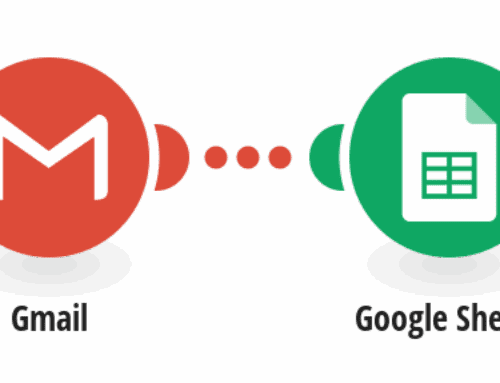“`
How to Create Outgoing Invoices for Etsy Sellers
If you’re selling on Etsy, managing your finances effectively is crucial. One way to do this is by creating outgoing invoices for each transaction. But what exactly are these invoices, and why should you bother with them? Let’s dive into the details, exploring how outgoing invoices can streamline your business operations and enhance your professional image.
Understanding the Importance of Outgoing Invoices
Outgoing invoices serve as formal documentation of a sale between you, the seller, and your buyer. They are essential not only for keeping track of sales but also for maintaining accurate financial records. By issuing invoices, you create a clear paper trail, simplifying tax reporting and providing evidence in case of disputes.
Moreover, professional invoices can bolster your business reputation. When buyers receive a well-organized invoice, it reflects positively on your business, showcasing professionalism and attention to detail. This can lead to repeat customers and positive reviews on your Etsy store.
Tools You Need to Create Invoices
Creating invoices might sound daunting, but the right tools can simplify the process. You don’t need to be a tech wizard or purchase expensive software. There are numerous templates and online tools available that cater specifically to Etsy sellers, such as Make.com’s templates.
These tools offer customizable templates where you can easily input your transaction details. With features like automatic calculations and easy customization options, creating an invoice is as simple as filling out a form. This alleviates stress and saves time, allowing you to focus more on your creative endeavors.
Setting Up Your Invoice Template
Setting up an invoice template involves a few straightforward steps. First, choose a template that suits your business needs. Look for one with features such as automatic date entry and currency conversion if you sell internationally. Ensure your template allows room for your branding elements like logo and business name.
Once you have your template, customize it by adding your business information, payment terms, and any relevant legal disclaimers. This will ensure each invoice you generate is complete and personalized, providing all necessary information to your buyers.
Including Essential Information
An effective invoice includes key pieces of information: seller and buyer contact details, a unique invoice number, the date, item descriptions, quantities, prices, taxes, total amount due, and payment methods accepted. This comprehensive data ensures both parties are clear on the transaction details.
Adding a touch of personalization, such as a thank you note or a reminder of your shop policies, can also enhance buyer experience. These small yet impactful gestures show that you value your customer’s satisfaction and appreciate their business.
Common Mistakes to Avoid
Even seasoned sellers can fall prey to common invoicing mistakes. A significant error is missing or incorrect details, such as invoice dates or amounts. Double-checking all entries before sending can prevent misunderstandings and maintain professionalism.
Another mistake is failing to follow up on unpaid invoices. Set reminders to review outstanding bills regularly. This proactive approach ensures you’re not losing out on payments and helps maintain positive cash flow for your Etsy shop.
Streamlining the Invoicing Process
With technology at our fingertips, automating repetitive tasks like invoicing can save you hours each week. Consider using integration tools that sync your Etsy sales with invoicing platforms. This can automate many steps, minimizing manual errors and ensuring consistency across all your invoices.
Additionally, keep your templates updated to reflect any changes in legal requirements or your business structure. Regular updates will keep your invoicing process smooth and compliant with current standards.
The Role of Good Communication
Clear communication with your buyers is another aspect that enhances the invoicing process. Inform them about what they can expect in terms of invoices and payment terms. This eliminates confusion and sets correct expectations from the onset.
In case of payment delays, a gentle reminder or follow-up message can prompt timely payments while maintaining good customer relations. Remember, the manner in which you communicate can have a lasting impact on your brand’s reputation.
Conclusion: Elevate Your Etsy Business with Professional Invoices
In conclusion, crafting clear and professional outgoing invoices is vital for any Etsy seller aiming for long-term success. It’s not just about keeping financials in order; it’s about nurturing trust and efficiency in every business transaction. By leveraging the right tools and maintaining good practices, you can streamline this aspect of your business, leaving you with more time to do what you love—creating!
FAQs
- How often should I send invoices to my Etsy customers?
- It’s recommended to send an invoice as soon as a transaction is completed to avoid forgetting. However, bulk invoicing monthly for regular customers can also work.
- Do I need to send an invoice for every small transaction?
- Yes, every sale requires an invoice for accurate records and legal compliance. Tools and templates can make this process quick and easy.
- What if my buyer doesn’t pay after receiving an invoice?
- First, send a polite reminder. If the issue persists, consider setting stricter payment terms for future transactions or seeking further advice if necessary.
- Can automated tools fully replace manual invoicing practices?
- Automated tools greatly reduce manual work but should be monitored to ensure accuracy and personal touches, like thankYou notes.
- Are there specific legal requirements for Etsy invoicing?
- Yes, ensure your invoices comply with both Etsy’s policies and local tax regulations. Including all necessary details and adhering to these rules is crucial.
“`








